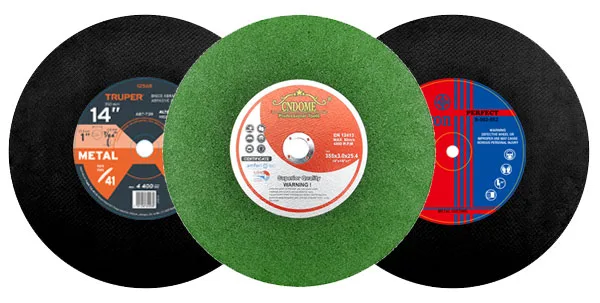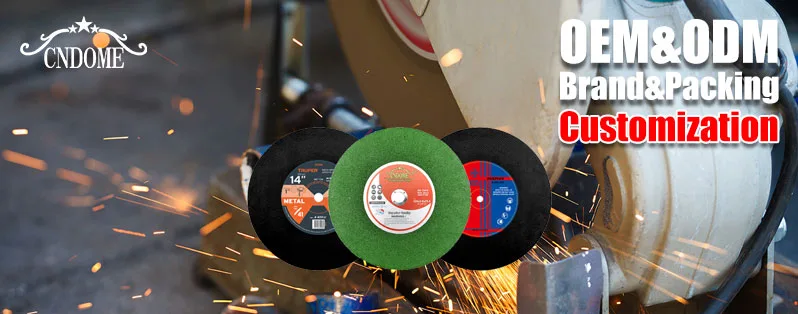When it comes to cutting through various materials, having the right tool for the job is essential. Cut-off wheels are a popular choice for precision cutting tasks, offering efficiency and versatility across different industries. However, not all cut-off wheels are created equal. In this blog post, we’ll explore different types of cut-off wheels and help you make an informed decision for your cutting needs.

Bonded Abrasive Cut-Off Wheels:
Bonded abrasive cut-off wheels are widely used for general-purpose cutting applications. They consist of abrasive grains held together by a bonding agent, such as resin or vitrified materials. These wheels are available in various hardness levels, making them suitable for cutting different materials, including metal, masonry, and even certain plastics. Their durability and versatility make them a popular choice for both DIY enthusiasts and professionals.
Diamond Cut-Off Wheels:
Diamond cut-off wheels are specifically designed for cutting hard and abrasive materials, such as concrete, ceramic, glass, and gemstones. As the name suggests, these wheels have diamond particles embedded in the cutting surface. The diamond’s exceptional hardness and durability make these wheels highly effective for precise and efficient cutting. However, due to their specialized nature, diamond cut-off wheels are typically more expensive than other types.
High-Speed Steel Cut-Off Wheels:
High-speed steel (HSS) cut-off wheels are primarily used for cutting through metal. These wheels are made from a hardened form of steel that can withstand high temperatures and provide excellent cutting performance. HSS cut-off wheels are known for their durability, long lifespan, and resistance to heat buildup, which is essential when cutting through tough metal alloys. They are commonly used in industrial settings and metal fabrication applications.
Carbide-Tipped Cut-Off Wheels:
Carbide-tipped cut-off wheels are designed for heavy-duty cutting tasks that involve dense and hard materials. These wheels feature a steel body with carbide tips attached to the cutting edge. Carbide is an incredibly hard material that offers exceptional cutting performance and longevity. Carbide-tipped cut-off wheels are commonly used in construction, woodworking, and metalworking industries where precision and durability are crucial.
Thin Cut-Off Wheels:
Thin cut-off wheels, also known as slitting discs, are designed to make precise and narrow cuts. These wheels have a thin profile, typically 1mm or less, which allows them to slice through materials with minimal material loss. They are commonly used for tasks like cutting sheet metal, pipes, and thin profiles. However, it’s essential to note that thin cut-off wheels are more delicate and can be prone to breakage, so they require careful handling and are not suitable for heavy-duty cutting.
Selecting the right cut-off wheel is vital for achieving precise and efficient cutting results. Consider the materials you’ll be cutting, the level of precision required, and the demands of your specific task. Bonded abrasive wheel provides versatility, diamond wheels excel at cutting hard materials, HSS wheels are ideal for metal cutting, carbide-tipped wheels offer durability, and thin cut-off wheels are perfect for narrow cuts. By understanding the different types of cut-off wheels and their applications, you can make an informed decision and achieve excellent cutting performance.

